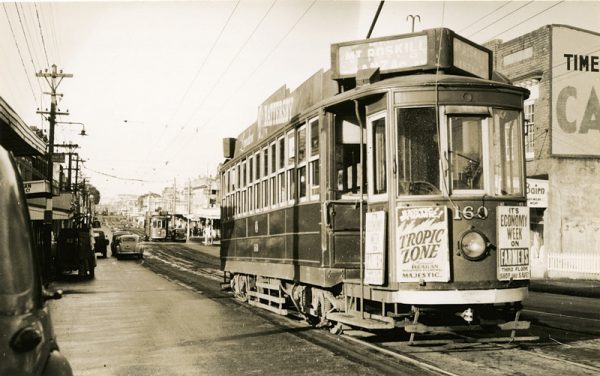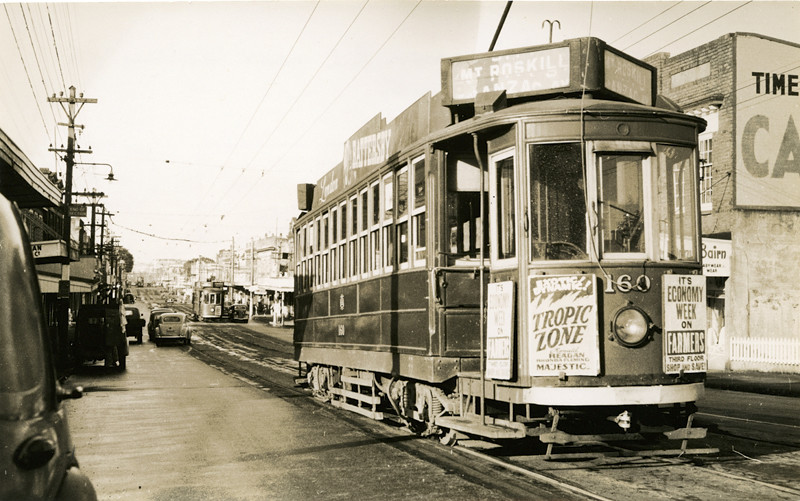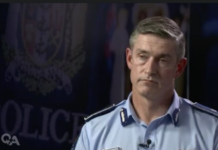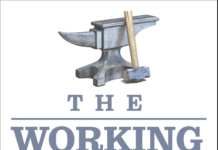
I was as intrigued as most when Transport Minister Phil Twyford announced the NZ Superannuation Fund’s interest in building, owning and operating the Minister’s favoured light rail project – costed provisionally at $6bn for two lines. As we know one of these will link Auckland International Airport with the central city via Dominion Road and the other will service the Minister’s Te Atatu electorate, eventually extending to Kumeu. One can only conclude that the Super Fund’s reported eagerness to invest in a public-private partnership (PPP) for this project means PPPs are as lucrative as their critics have long been saying – that is from the ‘private’ partner’s perspective. And it’s that role ironically, that the Crown-owned Super Fund is evidently planning for itself. ‘Privatise the profits – socialise the losses’ is the name of the game. But any profit must come at the expense of the ‘public’ partner. That’s us. The ratepayers, taxpayers, fuel tax-paying motorists and fare-paying passengers, in other words the people of Auckland – and New Zealand. But I thought the public were meant to be the beneficiaries of the NZ Superannuation Fund – not its fall guys.
I trust the government is getting good advice on this proposal because the worry is that when it comes to choice of rail mode to the airport, it clearly doesn’t have good advice at all. Opting for widely criticised light rail (trams) instead of heavy rail (trains) to the airport is a very high-risk call; one taken on dubious technical advice and without a business case.
It also out of line with international best practice.
Getting the NZ Super Fund to build it would mean the government doubling down on a deeply-flawed strategy. Leaving to one side the tramline to Te Atatu, let’s look once again at the pros and cons of light rail to the airport. To be fair, light rail has the benefit of being a versatile and efficient form of public transport. Modern trams can service busy inner city streets like buses, (‘street car’ mode), but can carry much more people (11,000 per hour) and in greater comfort than diesel buses (2500 per hour). Trams are great people movers, based on frequent stops, usually conveniently spaced at 350m to 800m apart. (Ideal for the inner city and waterfront). On the other hand electric trains (EMUs) can carry even more people (48,000 per hour) and go much faster than street-running trams. This is not just due to the superior power of EMUs, train stations tend to be spaced more widely apart, between one to three kilometres. The latest plan I have seen for a heavy rail connection from the airport via Puhinui to Britomart (journey time 30 minutes and costed at $750m) has it stopping at only two stations but providing cross platform connections to the rest of the suburban network – from Henderson to Pukekohe. In contrast the 22.8 km airport-Dominion Road-Britomart tramline will have 18 stops. It will be at very best 15 minutes slower than the train but due to traffic conditions much less predictable. From the user’s point of view (overlooked as always), weary international travellers, with their baggage, probably strap-hanging, through multiple tram stops to reach their central city hotels on a crowded tram would not be an ideal prospect. Even less so in the case of travellers, going the other way, anxious to get to the airport on time to make their flights.
When I visited Queensland’s Gold Coast a couple of years’ ago to inspect its brand new tramline, the managers emphasised to me one of their key ‘learnings’: light rail means ‘mass transit’ – not ‘rapid transit’. This is a fundamental point for ‘horses for courses’ mode decisions, one that both Minister Phil Twyford and Mayor Phil Goff worryingly still don’t understand.
So the key question, one that the cocksure politicians have overlooked in pushing their trophy project, is, will a slow tram journey between the central city and airport provide genuine competition to the private car and therefore combat growing traffic congestion? Because it is for this key reason, based on speed, capacity and predictability of journey time, that Melbourne which has biggest and most sophisticated light rail system in the world, will NOT be using trams for its airport connection but trains.
Phil Twyford proudly boasts his light rail scheme is ‘the biggest transport project in New Zealand’s history’, yet it will only service a comparative handful of Auckland suburbs. Is that really the smartest use of six billion dollars of public money?
One of the most worrying aspects of this decision, besides the lack of rigour and contestable advice backing it, is the remarkable unwillingness by both Minister and Mayor to even acknowledge, let alone learn from overseas experience. This will be a hugely expensive, technically challenging project. The stakes are high. If things go wrong the fallout will not only do lasting damage to the government, but could also financially cripple the ‘Super City’.
Mike Lee is an Auckland Councillor






Yea, and Neo-liberalism was International Best Practice / the Overseas Experience for a while as well… NZ doesn’t need to copy overseas models to be innovative or for something to be ‘legitimate’. Sydney Monorail anyone? Even The Simpsons could see that was a joke…
Airline passengers are likely to be a minority among the passengers on the proposed Airport Light Rail. Thousands of people work at the airport and in its vicinity. They live in Roskill, Mangere etc. Taking their SOV cars off the road because they are using the more reliable ‘tram’ makes the road clearer for the airline passengers. Mike doesn’t know what he is talking about. Rail from Puhinui takes about the same time to Airport as light rail via Roskill.
+1 GRAEME BROWN
Graeme,
If airport passengers are going to be the minority of the passengers why are we spending $2.5B on a slow link all the way to the airport. Dominion Rd is a bottleneck throughout the day the roads around Mangere are not, the link should be terminated at the edge of the isthmus. International best practice shows airports with high speed or short connection times increase airport traffic and catchment by 15-30%, Auckland Airport has a growing issue with transport access even after 100m+ spent on airport link roads we need to fix this. We don’t need another 4 lane harbour bridge or 2 track Britomart let’s be smarter this time.
So, Twyford & Goff are enabling tax payers superfund to be raided by corporates now who will have access to the CullenFund of nearly $41b!! Watch the $6b sum jump to $10b & then $15b ffs!
Whatever Twyford says, comes from his benefactor, Phil Goff!
A train via puhinui is all wrong
Go via Onehunga or go by tram
40% of Auckland airports passengers come from south the line should ideally come from both directions. Trams don’t scale and are too slow. Realistic peak travel by tram to airport 55min vs. 30 by heavy rail.
Mike, you’re correct.
I’ve tried to have this conversation with a certain pair of Auckland Councillors who are leading this, but they will not be swayed – they are zealots who are ignoring external advice. They specifically don’t want external consultation because they think they know what’s best for us.
Auckland Council is out of control – that much is evident. When they spend $935,000 on a study for a stadium on the waterfront then try to hide it, you know something is seriously wrong.
We need to remind ourselves that the Council is at it’s debt limit and risks a credit downgrade.
Oh and we have three stadiums already…
No doubt @ Cleangreen will be along shortly, but this option of the ‘light rail’ does seem to be driven by the Auckland-centric urban liberal.
I appreciate their willingness to engage with the options for commuter rail to points south (and a wee way north), such as Hamilton, Rotorua and Tauranga, and I appreciate they’ve rehearsed every cost-benefit-analysis and the rail gradients involved in providing such services, but what they seem to have forgotten is that Oakland Airport is an international gateway that is of regional signifikince.
Not only that, there’s the ongoing issue of where it stands in terms of freight movements and whether the (shipping) Port-a-Oakland should continue, or whether it might not be better to stop the corruption of Oakland’s waterfront in favour of Tearanga and places like Marsden Point (going forward).
Consider also the freight forwarding depots along the heavy rail links being built near Hamilton.
Cars via Marsden Point, Kiwifruit and other goods – fucking flowers and avocadoes even (to be airlifted to foreign markets) via the Hamilton environs, Tourism in the North Island triangle of Tearanga/TheMount, Rotovegas and Tearpor/Tourengi all mean a heavy rail that allows the option to carry both freight and human beings is a far better option – unless of course Oakland volk are so masochistic as to give their intaneshnool guests an experience that rivals the worst of 3rd whurl destinations.
We shouldn’t really be asking whether light or heavy rail is the best option, we should be asking (after, of course commuter rail to Hamilton, Rotovegas and Tearanga has been implemented, and after the Gizzy-Napier/Hasting link has been reinstated), whether or not Gizzy to Opotik, or Kinleith to Tearpor is worthwhile.
And that doesn’t even begin to address issues in the Searth Oilan.
I’ve no doubt though, it’ll all have been quantified, and risk-managed, and cost-benefit-analysed. There’ll be some highly paid consultant telling us it just “doesn’t stack up going forwid”
yes they will be getting advice from Morrison and Co, https://hrlmorrison.com/ , the private company that manage the superannuation fund.
please delve through their website to see all of the infrastructure (previously govt owned) businesses that they either own or manage. either as themselves or their subsidiaries trustpower, infratil.many of the public assets that have been privatised over the years.
also see that the chairperson is Rob Morrison who was also the chairperson for kiwibank at the time that kiwibank was sold to the superannuation fund. ie. he sold it to himself to manage privately.
Morrison and co was set up in 1989 by Lloyd Morrison who was a colleague of John Key in their finance market days. the current chair is Loyd’s son.
it makes me growl to see the faces of those benefiting from our history of privatisation.
How do you propose to get train from the airport to Britomart in 30 minutes when it takes 34 from Puhinui.
You can’t go express in peak hour with out reducing services to other station’s . So in reality train via Puhinui is the same journey time as a tram with smaller catchment
Andrew. Good question you asked. As part of a necessary third track from Glen Innes to Westfield, then connecting to the 3rd track which is coming in anycase, allows for semi express trains to operate Britomart – Airport in 30 minutes, 33 minutes with 2 stops at the MAJOR transport interchanges build recently by Auckland Transport at Panmure and Otahuhu. Thus integrating to the Eastern Bus Network and Southern Bus Network at those two key stations.
This means all East Auckland and a large part of South Auckland plus central Auckland and the Western line, plus the Southern line from Puhinui to Pukekohe and beyond to Waikato and Tauranga would have fast HEAVY RAIL train connections to the airport.
Remember, the airport train is the solution to help solve the congestion at the airport. Not to remove some suburban cars of Mangere roads as the tram proponents talk about. Heavy rail Trains is a serious alternative to driving to the airport and surrounds for most of Auckland. The tram serves a long, slow, skinny corridor and was designed by those boffins at Auckland Transport and quickly hooked an amateur transport group hook, line and sinker.
The problem is the airport traffic. AT and their cling-on group have forgotten that and designed a useless white elephant tram which does nothing to solve the issue.
With Express service, it takes 22min to get to Onehunga to Britomart so entirely possible and costed to do 30 mins to the airport. There is already been a costing done and it’s a lot cheaper than trams.
ANDREW – ever heard of a 3rd line for speed? Ever thought out of the square that New Eastern and Southern bus networks, much crowed about by AT and their subsidiary of amateur transport writers love. So the airport train quickly serves all those dozens of bus connections. Massive catchment. Also, in your simplistic points – fast trains to South Auckland, Pukekohe and Hamilton can all serve the airport.
Yes, only 10% of airport users will use the AT/GA tram – because the plan, route and speed suck.
Mike Lee hasn’t got a clue – calling them trams tells me he is an old man living in the 1950s, time to move over old timer.
Regardless of the name being given to this transport mode proposed Light Rail or Tram we are talking about a service that will share the road with cars so inherently slow and at the mercy of other traffic that may block their path especially down the Dominion Road section. Insulting Mike Lee does not remove the fact that the majority of Tram/Light rail major cities in the world do not waste their time using this mode of transport as a primary airport connection. Calling this rapid rail shows their ignorance.
I appreciate Mike Lee’s long involvement in advocating for decent public transport in Auckland. Mike has long advocated upgrading heavy rail passenger services in the region. I worked for 42 years driving and firing trains in NZ and whilst I agree with many of his arguments some of his assumptions may not hold true.
In particular, direct train services from downtown Auckland to the Airport could only achieve faster travel times if the airport trains had dedicated running lines. If such services were sharing the tracks with other suburban trains that were stopping at most stations the airport running times would mirror the time taken by the trains they were following.
The crucial issue is to provide separate running lines for either a heavy rail service to the airport or the proposed light rail service. If either service is not segregated from conflicting with other services or traffic then delays will be inevitable.
Mike refers to the proposed light rail rolling stock as “trams” and other opponents refer to them as “trolleys”. In fact, these new vehicles will have much more in common with the multiple unit electric trains already serving Auckland than the vintage trams in operation.
For example, modern light rail vehicles do not use trolley poles to convey the electric current from the overhead, instead they use pantographs similar to those used on the new electric multiple unit trains. Modern light rail trains are comfortable air conditioned trains with great acceleration between stops.
I have traveled on light rail services from central Melbourne to the Port of Melbourne. After passing the Casino the service travels along a former railway line using the tracks, stations and overhead previously used by a conventional train. For several kilometres the light rail service travels at approximately 80 – 90 kph between stations providing a safe, fast and convenient service.
I would urge Mike and others to be less concerned about whether light or heavy rail is introduced. Instead, advocate for separate corridors/tracks to be provided so that the intended rail services are not compromised by the very road conditions they are intended to resolve.
Great point STAIRCASE. The planned Light rail path down Dominion Rd does not achieve that separate Grade separated corridor so can only provide an airport service that will take 45-60mins at peak, perhaps if the proposal saw grade separation down this road, a better service could be proposed. The government’s commitment to investing in the 3rd rail allows a semi-express service to provide a fast airport connection using heavy rail that is already in place the majority of the way to the airport. I know that mike is in favour of light rail/trams down dominion Rd just not for the airport connection as this will limit how many people would benefit from it.
If there’s any possible way to fark up a transport project, even a seemingly unfarkable no brainer proposition like a train line to the airport, you can be sure that New Zealand will find it. The single-minded determination to reinvent every wheel, to innovate where no innovation is required, to gild and pad and to find the most ridiculous solution to any problem, this is a hallmark of the way we do things here.
Examples abound; from humble beginnings, with our oopsie harbour bridge clip-ons, to a $2 tunnel-tollway payment process that makes you get out of your car, or pay two weeks later on the internet with a credit card. A beautiful parallel Northern Expressway just for buses, hardly used, within sight of a permanently gridlocked freeway. The staggering inability to run a railway. 80 kph speed limits on our newest autobahn. The Balkanisation of the Yellow Bus company into a collection of warring private fiefdoms. Spending $75 million plus on a system to collect fairs while many major cities are turning to free public transport.
Now the crowning glory, the largest transport boondoggle yet conceived, a bloody tram to the airport. In terms of what it can do for our international reputation, no doubt it will be on the scale of Lord of the Rings, though not in a good way, as one million tourists a year get to rub shoulders and wrangle luggage in gritty competition with one hundred thousand auckland commuters a day. Imagine the spectacle! The drama! The comedic opportunities!
Who ever said the Brain Drain was over? I say it is only now bearing it’s finest fruits. Oh you far flung Kiwis, you children of the Jet Age, our best and brightest, fly, fly home at once! Your country needs you now more than ever!
Just for godsake make sure you’ve paid your student debt so you don’t get arrested at the airport when you get here.
Dear Mike,
As you are aware I was for a long time an advocate for extending heavy rail from Onehunga to the airport. Ten years ago I even went to the environment court to protect a rail corridor from the new Manukau harbour crossing. It is regrettable that Manukau City, the ARC and Transit never got round to creating a legal designation for the corridor through Mangere.
Since then my view of a rapid transit link to the airport has changed.
The purpose of light rail on Dominion Rd is not solely people wanting to get to the airport, it’s mostly to increase people carrying capacity through a busy corridor.
Most travellers to the airport from the city will take the train to the new Puhinui interchange and switch to a frequent bus service. We can expect the travel time for Britomart to Puhinui trips to be reliably around 40 – 45 minutes. Same for trips from the south to the airport. Eventually the bus service will become light rail Botany to airport.
A heavy rail link off the NIMT won’t have a high enough service frequency from Britomart because only one in three trains could go to the airport if the desire is for a single seat journey with no transfers. (Manukau and the south being the other two destinations.) Much better from a timetable frequency point of view is to abandon the single journey requirement and to transfer to a different line. Having different lines to enable higher frequencies through transfers is the network design of cities around the world. That different line could be heavy or light rail, but I think the on street running requirement to Botany means ultimately that will be light rails too.
Regards
Cam
Comments are closed.